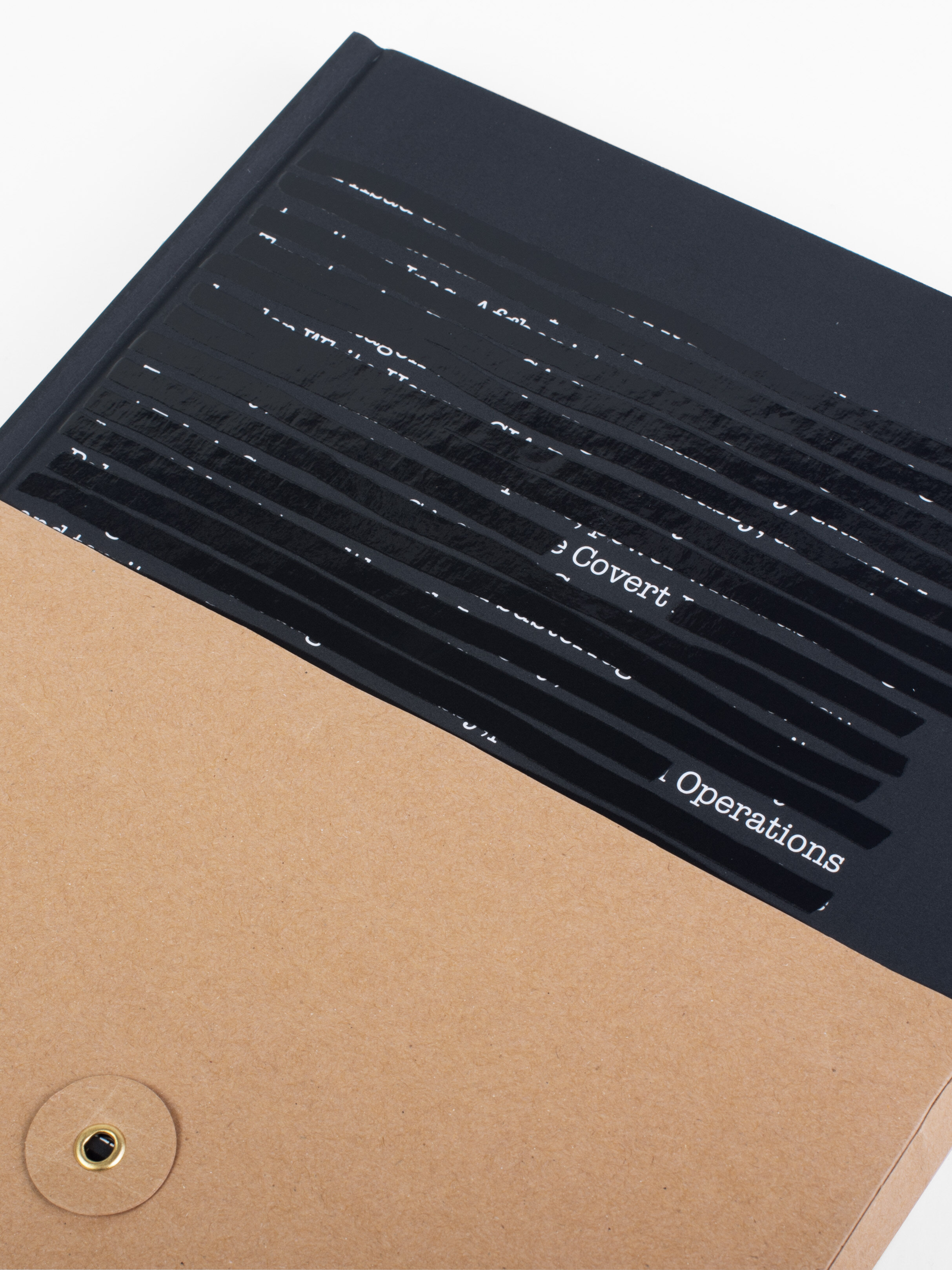Covert Operations: Investigating the Known Unknowns
Works by thirteen artists that directly address citizens’ constitutional rights and the vast expansion of federal power.
Foreword by Timothy R. Rodgers
Text by Claire C. Carter, Sandra S. Phillips, and Dana Priest
Hardbound with envelope sleeve
11.75 in x 8.5 inches
126 pages / 55 images
ISBN: 9781934435861
Works by thirteen artists that directly address citizens’ constitutional rights and the vast expansion of federal power.
Foreword by Timothy R. Rodgers
Text by Claire C. Carter, Sandra S. Phillips, and Dana Priest
Hardbound with envelope sleeve
11.75 in x 8.5 inches
126 pages / 55 images
ISBN: 9781934435861
Works by thirteen artists that directly address citizens’ constitutional rights and the vast expansion of federal power.
Foreword by Timothy R. Rodgers
Text by Claire C. Carter, Sandra S. Phillips, and Dana Priest
Hardbound with envelope sleeve
11.75 in x 8.5 inches
126 pages / 55 images
ISBN: 9781934435861
COVERT OPERATIONS’s rich conceptual themes include secrecy and disclosure, violence, power, subterfuge, surveillance, territory, geography and the visible versus the hidden. Subjects range from classified military sites and reconnaissance satellites to border and immigration surveillance, terrorist profiling to narcotics and human trafficking, illegal extradition flights to nuclear weapons. The thirteen international artists featured in Covert Operations: Investigating the Known Unknowns use legal, traditional research methods and resources—including the Freedom of Information Act, government archives and insider connections—to collect and reveal unreported information.
The title is a direct reference to Donald Rumsfeld’s eerie insight into our post-9/11 landscape. In 2002 he commented to the press corps: “[T]here are known knowns; there are things we know we know. We also know there are known unknowns; that is to say we know there are some things we do not know. But there are also unknown unknowns—there are things we do not know we don’t know.” His assertion, although obfuscatory, is both logical and rhetorically accurate.
Many of the artists in Covert Operations examine the complicity of both governmental and individual actors in human rights violations. Others investigate the “black world,” or the hidden institutional structures and economy of the United States intelligence community. Other subjects include Black Ops and Black Sites, geographic sites of clandestine governmental operations. Still other artists testify to personal discrimination in the name of national security. The power of bearing witness is one reason why a visual art exhibition can be a potent vehicle for shedding light on the complicated relationship between freedom and security, individuals and the state, fundamental extremism and democracy. As former U.S. Supreme Court Justice Louis Brandeis observed, “Sunshine is said to be the best of disinfectants.”
Covert Operations includes works by thirteen multidisciplinary visual artists and collaboratives: Ahmed Basiony (Egypt), Thomas Demand (Germany), Electronic Disturbance Theater 2.0 (United States), Hasan Elahi (Bangladesh/United States), Harun Farocki (Germany [German-annexed Czechoslovakia]), David Gurman (United States), Jenny Holzer (United States), Trevor Paglen (United States), Jenny Perlin (United States), Anne-Marie Schleiner and Luis Hernandez Galvan (United States; Mexico), Taryn Simon (United States), David Taylor (United States) and Kerry Tribe (United States).












